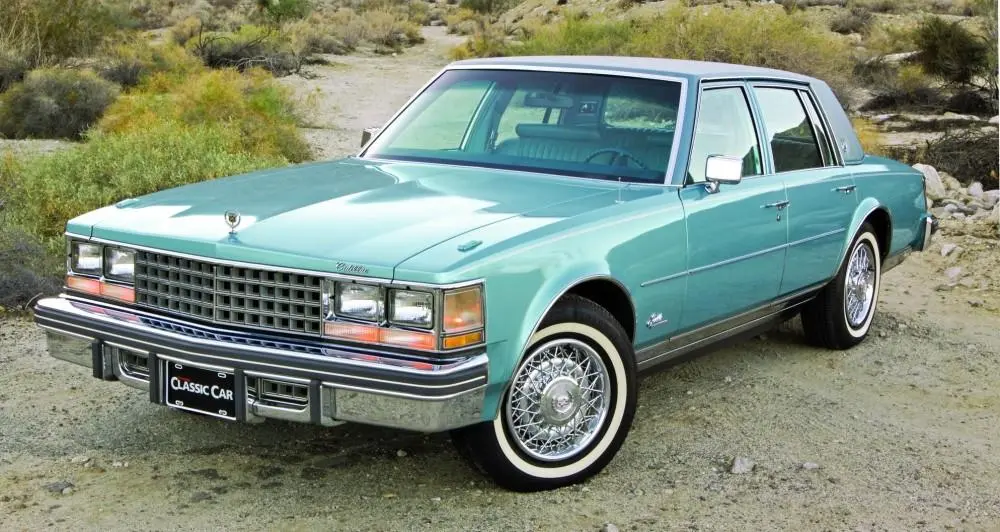For more than a century, Cadillac has represented the pinnacle of American automotive luxury. Few brands have cultivated an identity so strongly tied to comfort, elegance, and effortless motoring.
At its best, Cadillac was never just a car—it was a moving sanctuary, a symbol of success that floated down the road like a cloud, shielding its passengers from the chaos outside.
The Cadillac ride wasn’t merely soft—it was transformative. Long before ride quality became a buzzword for the luxury segment, Cadillac had already perfected it, offering full-size sedans and coupes that redefined what it meant to glide rather than drive.
The phrase “rides like a Cadillac” didn’t come from nowhere—it came from experience. Generations of drivers knew that once you sat behind the wheel or took a place in the back seat of a big Caddy, everything else felt crude by comparison.
There was a weight to the car’s motion, a softness to its responses, a silence that bordered on surreal. These vehicles were engineered with comfort as their guiding principle, and for decades, Cadillac built its entire identity around that experience.
But time changes all things—including customer expectations. As the 1990s gave way to the new millennium, Cadillac found itself at a crossroads. A younger market, enamored with German precision and Japanese reliability, wasn’t as interested in floaty rides and pillowy seats.
The old-school Cadillac formula began to feel out of touch to some, outdated to others. In response, Cadillac shifted focus. It began to build firmer, more agile vehicles aimed at enthusiasts rather than comfort-seekers. The brand pivoted toward performance, benchmarking BMW and Mercedes rather than relying on its heritage.
That pivot brought both gains and losses. On one hand, models like the CTS, ATS, and STS-V helped Cadillac shed its image as a maker of retirement cars and gain credibility among younger, more performance-oriented drivers. On the other hand, that transition came with a price.
The magic—the pillowy, cloud-like smoothness that once defined the Cadillac ride—was sacrificed in many models for sportier suspension tuning and stiffer chassis dynamics. While some cars found a way to modernize without losing the core of what made Cadillac special, others strayed too far, leaving longtime fans wondering if the soul of the brand had been lost.
Today, Cadillac seems to be rediscovering its roots. With advancements like Magnetic Ride Control, active noise cancellation, and ultra-luxury features in models like the CT6 and Celestiq, the brand is once again crafting cars that cushion, isolate, and relax.
But the journey has not been a straight line. In this article, we’ll explore ten Cadillac models—five that stayed true to the brand’s heritage by still riding like clouds, and five that lost that essence in pursuit of a new identity. This list isn’t just about comfort—it’s about character.
It’s about how some cars remembered what it meant to be a Cadillac, and how others, despite their strengths, let that identity slip away.
Also Read: 5 Cars That Don’t Suck in LA Traffic and 5 That Are a Nightmare
5 Cadillac Cars That Still Ride Like Clouds
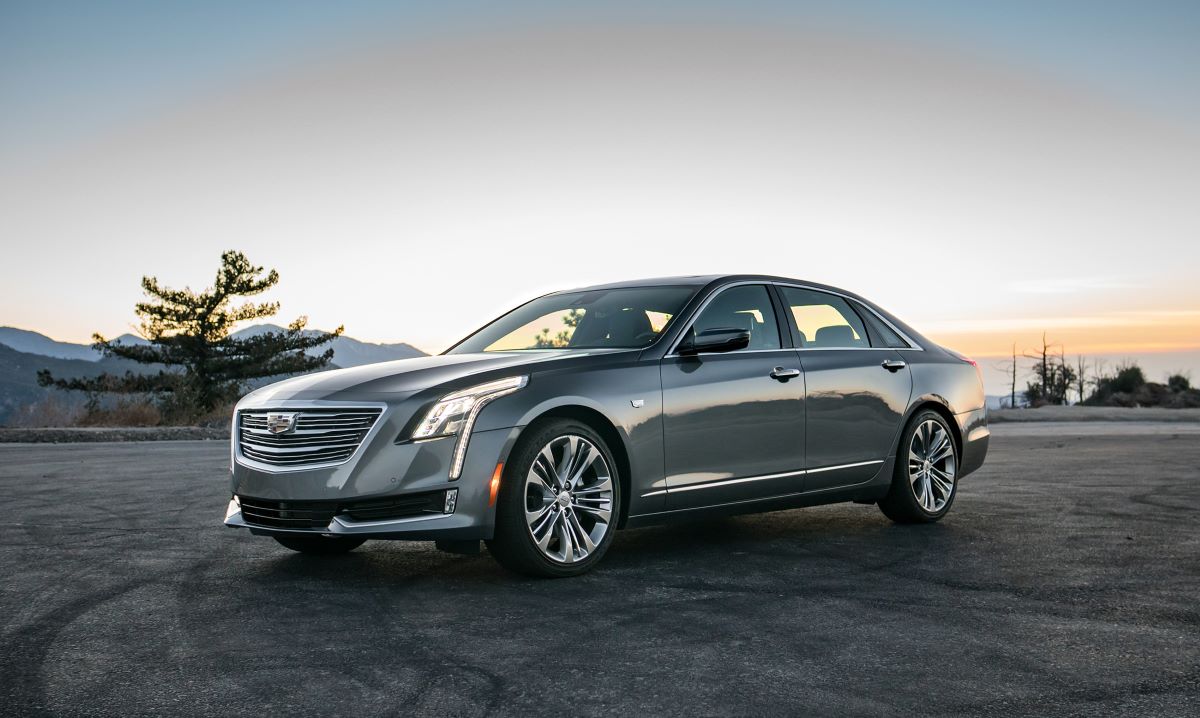
1. 2023 Cadillac CT6
The 2023 Cadillac CT6 is arguably one of the finest modern interpretations of Cadillac’s historic commitment to ride quality. Although Cadillac has shifted more toward performance in recent years, the CT6 manages to carve out a space where comfort, technology, and refinement coexist in a thoroughly modern package.
What makes it so remarkable is the Magnetic Ride Control system—Cadillac’s most advanced suspension technology. This system reads the road 1,000 times per second and adjusts shock absorber damping in real-time, virtually eliminating the harshness of potholes, expansion joints, or road imperfections.
While many luxury cars strive to find a balance between sportiness and softness, the CT6 leans subtly—but unmistakably—toward the plush, without giving up control. The car doesn’t float uncontrollably, but it certainly glides.
What elevates the CT6’s comfort to “cloud-like” is how seamless everything feels. Steering inputs are silky, acceleration is linear, and braking is progressive and smooth. The cabin insulation is among the best in the segment, thanks to laminated glass, active noise cancellation, and tight body construction. Road and wind noise are reduced to whispers even at highway speeds.
Every element of the car—from the damping of buttons to the soft-close doors—feels designed to lower your heart rate. Unlike sportier Cadillacs, where driver engagement takes center stage, the CT6 invites you to sit back and let the car do the work.
Especially when equipped with Super Cruise, Cadillac’s semi-autonomous driving system, the experience becomes something akin to being chauffeured, even if you’re in the driver’s seat.
The CT6 also doesn’t forget the luxury part of the equation. Inside, the materials are rich and layered—leather, wood, brushed metal, and soft-touch plastics blend to create an inviting and calming environment. Rear passengers benefit from exceptional legroom and power-adjustable seating, making this a legitimate executive sedan.
For those who long for the Cadillac of old, but want the conveniences of the new—wireless Apple CarPlay, a robust Bose Panaray sound system, and advanced driver aids—the CT6 is a rare bird. It honors the past with grace while moving confidently into the future, and in doing so, proves that Cadillac hasn’t forgotten how to float.

2. 1993 Cadillac Fleetwood Brougham
The 1993 Fleetwood Brougham is a towering monument to Cadillac’s golden era—a last hurrah for the body-on-frame, V8-powered, rear-wheel-drive luxury barges that defined mid-century American opulence. Measuring over 18.5 feet in length and weighing in at nearly 4,800 pounds, the Fleetwood Brougham was unapologetically massive.
This weight, combined with a softly sprung suspension and long wheelbase, created a ride quality that was simply unmatched at the time. You didn’t just drive a Fleetwood—you sailed in it.
The softness of the suspension meant you rarely felt road imperfections, and even rough patches became mere suggestions under the car’s massive footprint. For those seeking a classic Cadillac float, this car remains one of the purest examples.
The comfort wasn’t just mechanical—it was experiential. The interior was outfitted like a gentleman’s lounge on wheels: cushy bench seats, thick carpets, woodgrain dash inserts, and power everything.
The seats were more like La-Z-Boys than automotive chairs—wide, soft, and built for cruising. Unlike today’s bolstered and sport-inspired thrones, these were designed with only one purpose in mind: to relax.
Visibility was expansive thanks to the car’s size and low beltline, and the whisper-quiet cabin meant you could hear the soft tick of the analog clock while gliding down the interstate. Every feature, from the soft-touch climate controls to the slow but elegant power window motors, contributed to the feeling that time moved more slowly inside a Fleetwood.
Mechanically, the 1993 model also represented a rare convergence of traditional Cadillac craftsmanship and modern reliability. It was powered by a smooth 5.7-liter V8 that delivered torque effortlessly, enabling brisk acceleration without ever feeling hurried. The steering was light, almost over-assisted, but that only added to the floating sensation.
It was never meant to corner tightly or dart through traffic; instead, it carried its passengers with a kind of rolling dignity. Even decades later, enthusiasts seek out well-preserved examples of this model specifically for that ride quality.
The Fleetwood Brougham remains one of the last vehicles that made no compromises in its pursuit of comfort. It doesn’t just ride like a cloud—it embodies Cadillac’s once-sacred mission to isolate and pamper.

3. 1976 Cadillac Eldorado Convertible
If you’ve ever wondered what it feels like to drive a living room down the highway, look no further than the 1976 Cadillac Eldorado Convertible. This was not just a car—it was an event. As one of the last full-size American convertibles, the Eldorado was as much about attitude and presence as it was about performance.
The ride, however, was its defining feature. With its massive 500-cubic-inch V8, soft coil spring suspension, and front-wheel-drive layout, the Eldorado didn’t just absorb bumps—it ignored them entirely.
You could run over a manhole cover at 40 mph and feel nothing more than a vague sigh beneath you. Driving one feels less like piloting a car and more like guiding a small cloud through a canyon of lesser vehicles.
What sets the 1976 Eldorado apart, especially in convertible form, is how it combines the tactile and the ethereal. The massive, pillowy leather seats and broad dashboard exude 1970s Americana—huge, overbuilt, and drenched in comfort-first engineering.
The suspension travel was long, and the damping was tuned more for float than feedback. On tight roads or twisty turns, the Eldorado behaved like an elephant in a ballroom—but that was never the point. Out on open highways, it simply excelled.
The car floats across the pavement as though the laws of physics have been temporarily suspended. The ride is detached in the best way, isolating the occupants from both noise and harshness. The long wheelbase adds to the stability, while the weight adds a regal heaviness that translates into an unmatched sense of security.
The open-top experience only amplifies the sensation. With the top down, you’re not just floating—you’re soaring. The car draws admiration wherever it goes, not only for its looks but for the aura it projects. There’s a rhythm to the Eldorado, a tempo that slows everything down and turns even mundane drives into pleasure cruises.
In today’s world of sport suspensions and aggressive chassis tuning, the Eldorado remains a glorious reminder of when Cadillac wasn’t afraid to build cars that prioritized serenity above all else. To ride in one is to experience a piece of automotive history still unmatched in sheer comfort and presence.
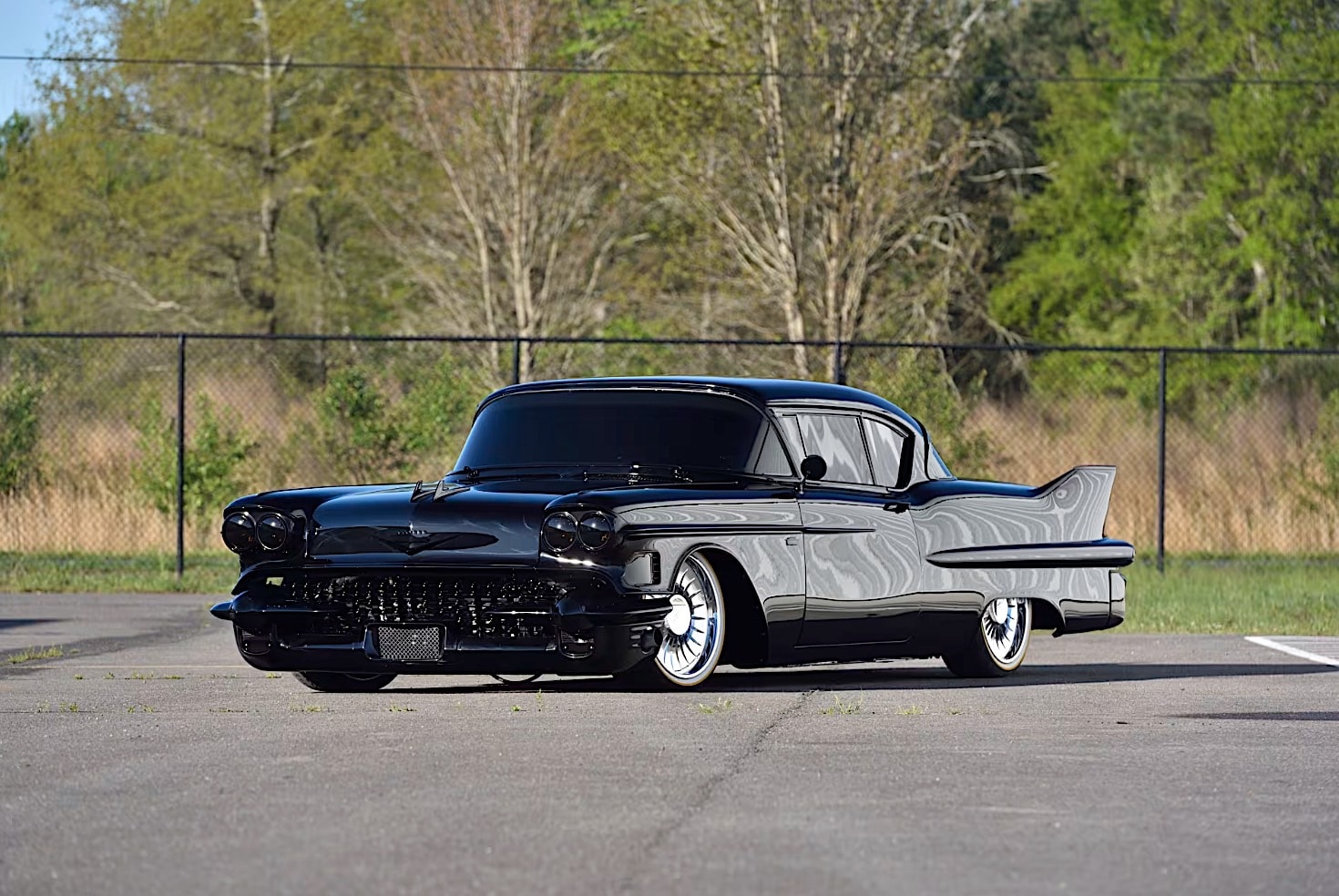
4. 2002 Cadillac DeVille DHS
As Cadillac transitioned into the 21st century, the 2002 DeVille DHS stood as one of the last bastions of traditional American luxury. The DHS—DeVille High Luxury Sedan—wasn’t trying to be sporty or European.
It embraced Cadillac’s heritage with confidence, delivering a cushioned, serene ride that immediately recalled the marque’s mid-century glory days. It was large, smooth, and gently tuned, gliding over city streets and freeways with a grace few modern vehicles could match.
Unlike its STS siblings or foreign rivals, the DHS was committed to the art of effortless motion. Its combination of a long wheelbase, soft suspension geometry, and the infamous Northstar V8 made for a floaty ride without being unstable, and cushioned without being disconnected.
The interior further reinforced this philosophy. Plush, wide seats wrapped in leather offered six-way adjustability and optional heating and cooling.
The climate control system was whisper-quiet and accurate, and the dashboard ergonomics were designed for ease of use, not sporty flair. The ride quality was enhanced by Cadillac’s continuously variable road-sensing suspension, which subtly adjusted damping rates without disturbing the car’s balance.
It didn’t matter if you were the driver or a passenger—the car isolated you from the outside world with a gentle hand. Even sound intrusion was minimal thanks to laminated glass and soundproofing materials strategically placed throughout the chassis.
The DeVille DHS also offered a unique emotional appeal. It evoked the kind of dignity and respect once automatically associated with Cadillac.
In an era when many manufacturers were trying to be all things to all buyers, the DHS knew its role and played it beautifully. It was a car for those who wanted a gentle, undemanding drive—a machine that didn’t just transport but pampered.
Though often overlooked in the used market, this model has quietly earned cult status among fans of classic American luxury. For those in search of a modern car with an old-school Cadillac float, the DHS is a rewarding and refined choice that still rides like the clouds Cadillac was once famous for.
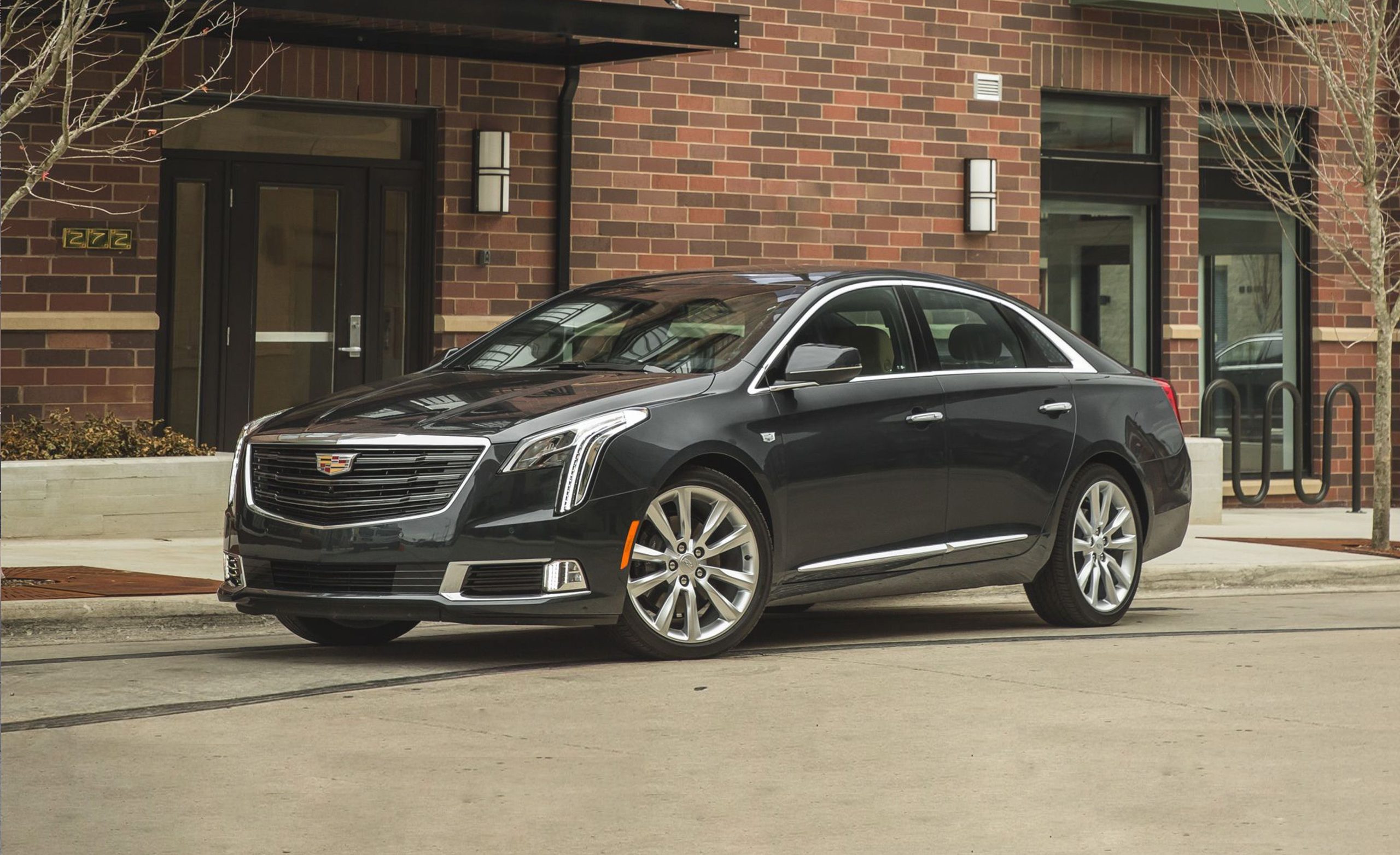
5. 2016 Cadillac XTS Platinum
The 2016 Cadillac XTS Platinum is a masterclass in how to use modern technology to resurrect a lost art—luxurious ride quality. At first glance, the XTS was criticized by automotive journalists for being “too soft” or not dynamic enough to compete with rivals from BMW or Audi.
But this criticism missed the point. Cadillac never designed the XTS to out-corner a 5 Series. It was created to glide—to isolate, to insulate.
And in this mission, especially in its top-tier Platinum trim, it succeeded brilliantly. With Magnetic Ride Control, a long wheelbase, and a well-tuned chassis, the XTS provides a driving experience that is soothing, stable, and completely unbothered by the imperfections of the road beneath it.
Inside, the XTS Platinum impresses with its richness. Semi-aniline leather, real wood inlays, ambient lighting, and microfiber suede headliners create a cocoon-like environment. But it’s not just about materials—it’s about execution. Everything in the XTS is designed to reduce stress.
The ride is quiet, the handling is neutral but forgiving, and the seats are as comfortable as they are supportive. Cadillac also included noise cancellation technology, which actively countered unwanted sounds and allowed the engine’s hum to fade into a distant murmur.
Even the climate system operated with subtlety, cooling or heating without a fuss. The XTS Platinum feels more like a high-speed luxury lounge than a traditional sedan.
Though no longer in production, the XTS remains a standout among recent Cadillacs for how confidently it embraced softness in a world obsessed with sport. It didn’t try to be everything—it chose to be comfortable. And that decision has aged well.
For buyers who yearn for the Cadillac experience of old, but also want to enjoy the conveniences of modern engineering, the 2016 XTS Platinum is a quiet revelation. It may not impress on a racetrack, but on a long highway cruise or a nighttime drive through the city, few cars feel as composed, quiet, or effortlessly smooth.
5 Cadillac Cars That Lost That Magic
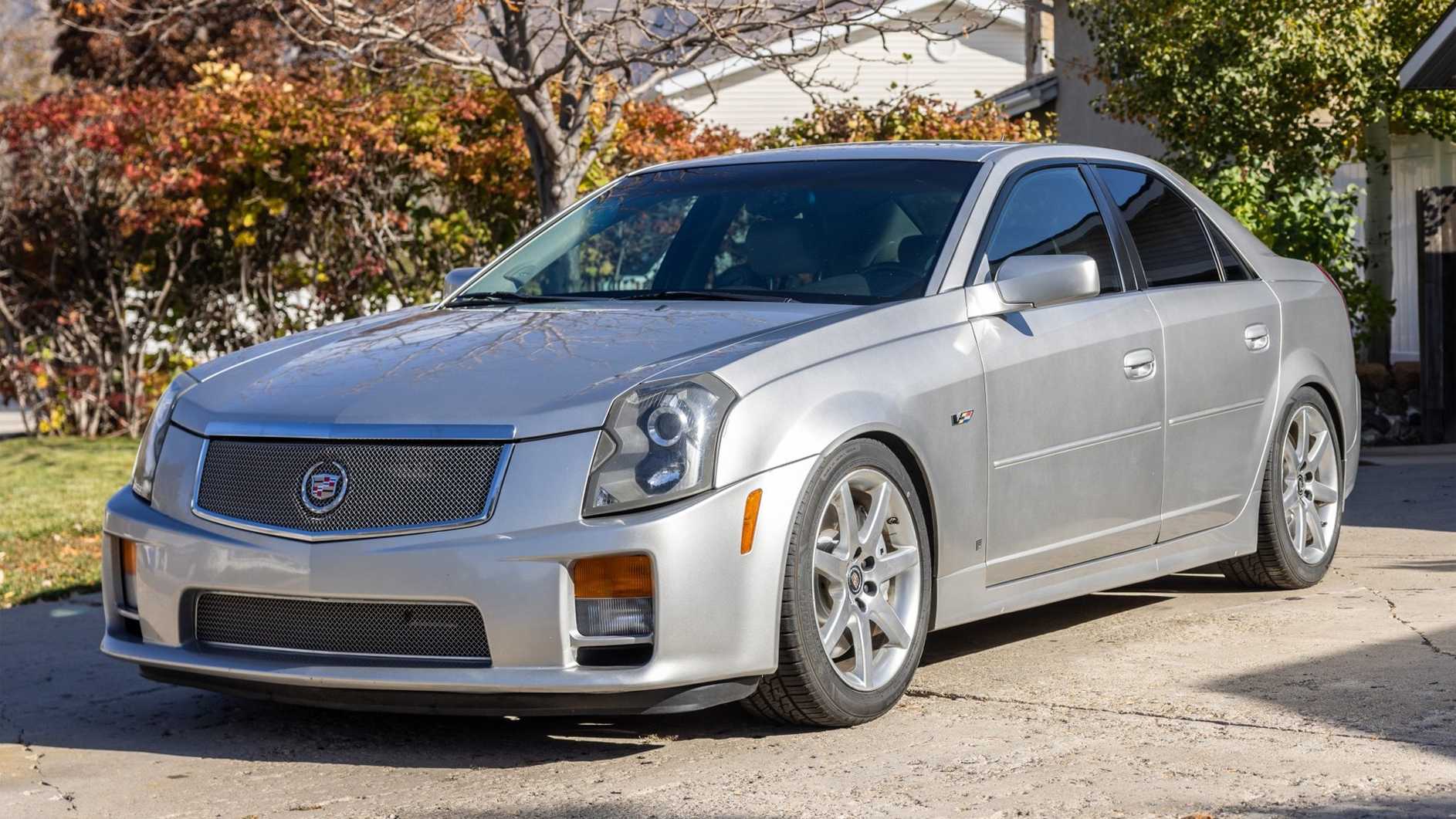
1. 2003 Cadillac CTS
The 2003 Cadillac CTS marked a seismic shift in Cadillac’s identity. It was the first model to emerge under the “Art & Science” design philosophy, which aimed to drag the brand out of the aging luxury lane and into a modern, performance-driven future. In doing so, Cadillac leaned hard into European handling benchmarks. The result was a car that certainly felt more dynamic, but at the expense of ride quality.
Built on GM’s Sigma platform, the CTS was stiff, compact, and tuned for agility. The suspension was firm, the ride low to the ground, and the steering precise—but this new formula was a departure from everything Cadillac used to stand for. Those seeking a serene ride found themselves jarred by potholes and uneven surfaces that older Cadillacs would have floated over.
The firm ride may have pleased automotive journalists, but it alienated Cadillac’s traditional customer base. Drivers accustomed to the plush comfort of models like the DeVille or Seville were stunned by how harsh the CTS felt by comparison. There was very little isolation from road imperfections, and the cabin let in far more road and wind noise than was typical of a Cadillac.
The seats, while supportive, lacked the plushness buyers expected. Combined with a rather austere interior layout, the CTS felt like a car built to impress critics rather than pamper its occupants. It was clear Cadillac was chasing BMW, but in doing so, it lost the signature softness that once defined the brand.
What’s particularly ironic is that Cadillac succeeded in making a genuinely competent sports sedan—it just forgot to make it feel like a Cadillac. The CTS’s success laid the groundwork for future performance-oriented models like the CTS-V and ATS, but it also started Cadillac down a path of brand confusion.
In trying to prove it could build a driver’s car, Cadillac neglected the emotional appeal of its traditional ride comfort. The 2003 CTS may have signaled a rebirth in one sense, but it also marked a departure from the luxury cloud-riding ethos that had defined Cadillac for generations.
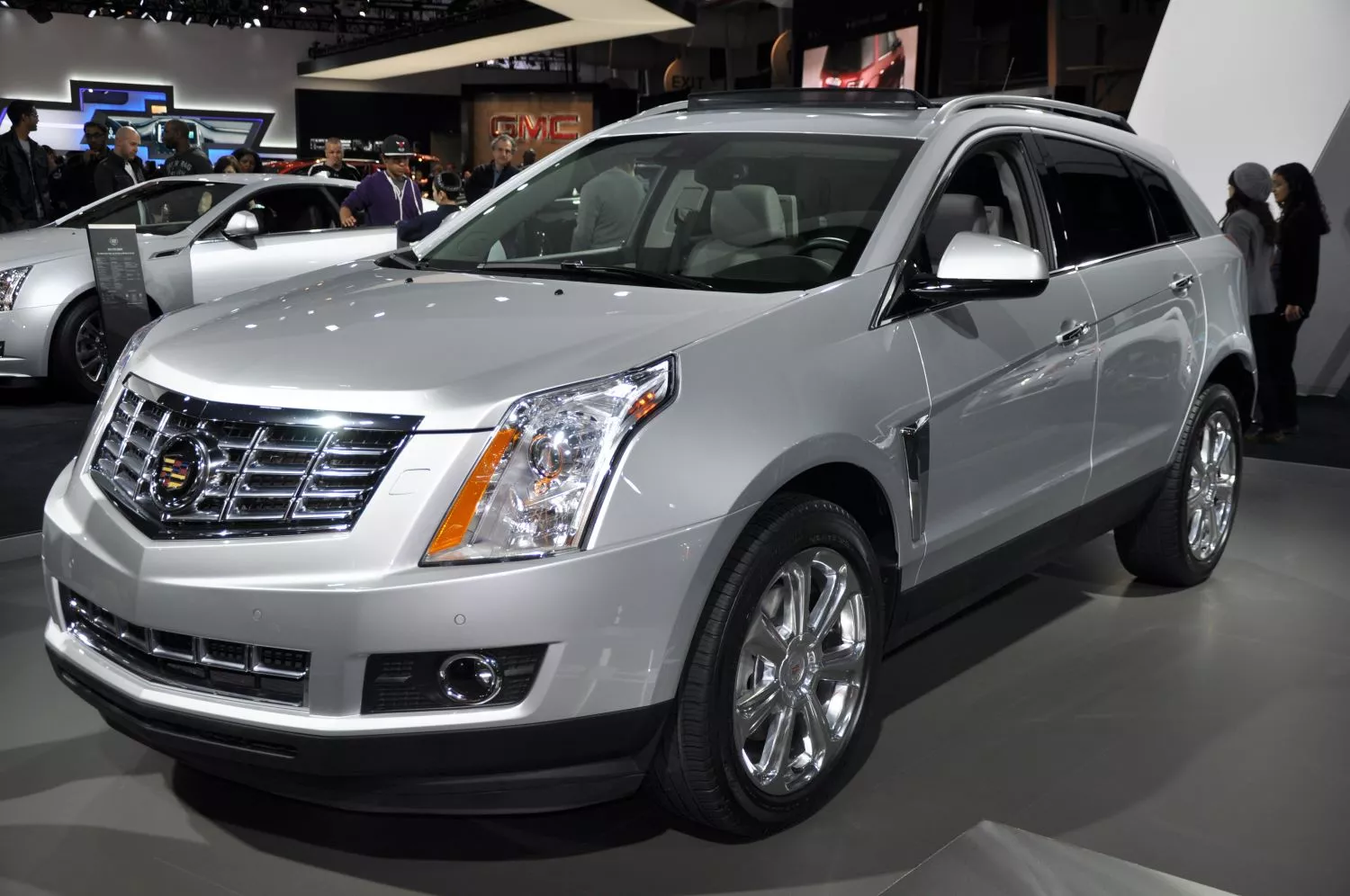
2. 2010 Cadillac SRX
The 2010 Cadillac SRX represented a complete reinvention of Cadillac’s luxury crossover. The first-generation SRX had been a rear-wheel-drive, V6 or V8-powered wagon-like SUV with surprisingly good road manners and a reasonably plush ride. But sales never took off, so Cadillac rethought the formula for its second generation.
The 2010 model was smaller, based on a front-wheel-drive architecture shared with the Chevrolet Equinox and GMC Terrain, and marketed squarely at premium crossover shoppers.
While it featured modern styling and a contemporary interior, the ride quality was a significant step backward. The SRX was noticeably stiffer, louder, and more reactive to road imperfections compared to its predecessor, and to Cadillac’s core identity.
From behind the wheel, the SRX felt taut in a way that was almost jarring for a brand so closely tied to ride comfort. The suspension tuning, likely aimed at improving responsiveness and body control, resulted in a busy ride. Over rough pavement, bumps and jolts were transmitted clearly through the chassis, and the vehicle often felt unsettled on less-than-perfect roads.
While the SRX cornered better than most Cadillacs before it, that sharpness came at a high cost: passenger comfort. For a vehicle meant to shuttle families in comfort, it was surprisingly firm and noisy over time.
And because the SRX had relatively short wheel travel, the suspension often bottomed out over abrupt bumps—an issue that was virtually unheard of in classic Cadillacs.
Despite a nice interior with leather upholstery, a panoramic sunroof, and plenty of technology, the driving experience of the SRX didn’t deliver on Cadillac’s traditional promise of serene motoring. The disconnect between the luxurious appearance and the mediocre ride made the vehicle feel disingenuous.
Cadillac tried to compete with the Lexus RX and Audi Q5 by borrowing cues from them, but in doing so, it sacrificed the brand’s identity. The 2010 SRX didn’t ride like a Cadillac—it rode like a dressed-up GM crossover. It was functional, yes, but it lacked the magic that once made Cadillac ownership a uniquely pampering experience.
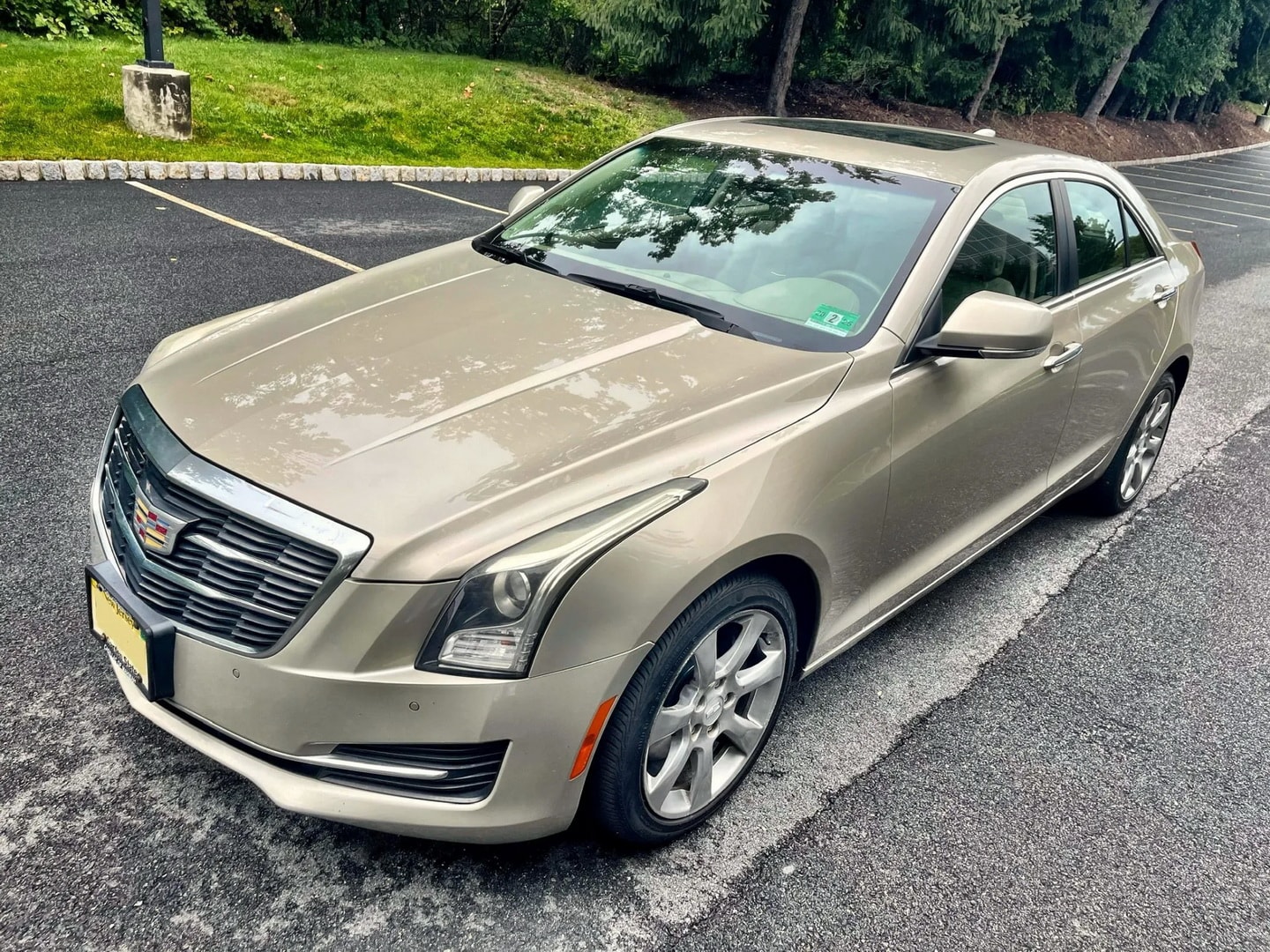
3. 2014 Cadillac ATS
The 2014 Cadillac ATS was heralded as a triumph by many in the automotive press. Built from the ground up to compete directly with the BMW 3 Series, the ATS featured a balanced rear-wheel-drive platform, optional turbocharged engines, and sharp, performance-focused suspension tuning.
It was a bold, deliberate attempt to show that Cadillac could play in the sport-luxury sandbox and win. And in many ways, it succeeded.
The ATS handled superbly, offering precise steering, excellent cornering dynamics, and an agile, lithe feel rarely found in American sedans. But therein lay the problem: in making such a capable sports sedan, Cadillac had completely abandoned its comfort roots.
The ride quality of the ATS, particularly in trims equipped with sport suspension and low-profile tires, was unrelentingly firm. Every bump in the road was felt in the cabin. Road noise was pronounced.
Even long highway drives became tiring due to the car’s busy, constantly communicating chassis. For drivers coming from other performance brands, this was fine.
But for loyal Cadillac owners expecting a smooth, whisper-quiet ride, it was a bitter disappointment. The suspension, while great for spirited driving, lacked the suppleness required for luxury cruising. There was very little of that isolated, cushioned feeling that had once defined the Cadillac experience.
What made the ATS’s failure to ride like a Cadillac more frustrating was that it came wrapped in a package that looked luxurious. The interior was upscale, with leather, real wood, and modern tech. But these refinements were undermined by a ride that felt out of sync with the brand’s legacy.
In its eagerness to chase BMW, Cadillac built a car that could rival its German peers on the track but forgot what Cadillac buyers valued on the road. The ATS didn’t just lose the magic—it actively rejected it in favor of a new identity that, while competent, felt foreign to the brand’s DNA.
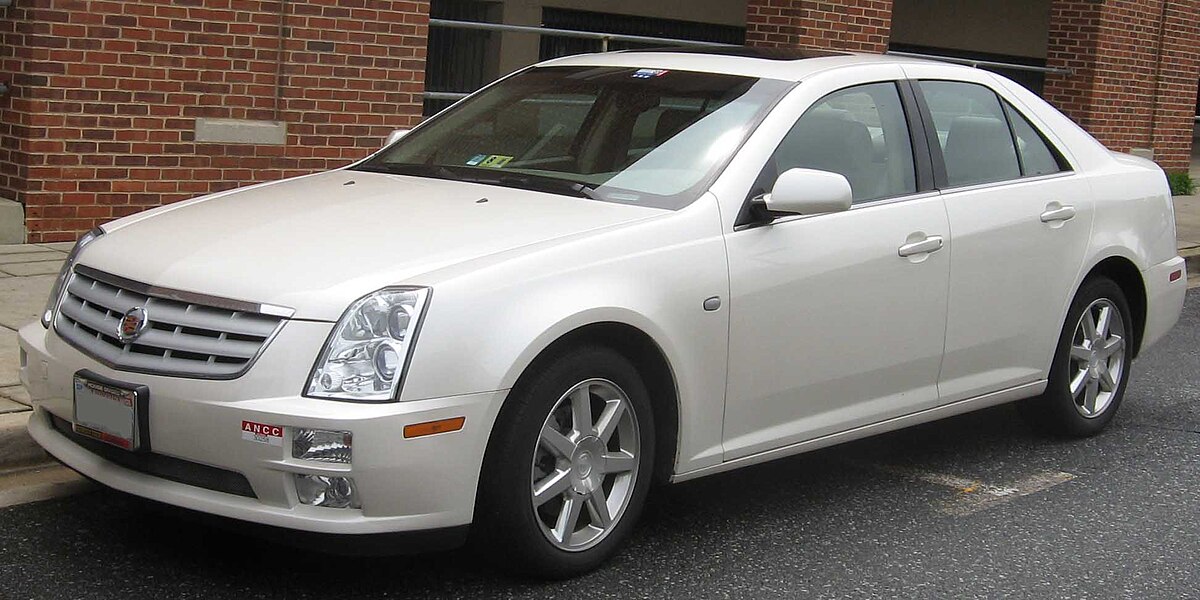
4. 2008 Cadillac STS-V
The 2008 Cadillac STS-V was designed to be the ultimate American sports sedan—a fire-breathing, supercharged flagship meant to take on European juggernauts like the BMW M5 and Mercedes E55 AMG. With a hand-built 4.4-liter supercharged Northstar V8 producing 469 horsepower, the STS-V had serious performance credentials.
But while it excelled in power and straight-line speed, it did so at the expense of Cadillac’s traditional hallmark: ride quality. The suspension was tuned to be firm and controlled, but that also meant it was unforgiving on imperfect roads.
For a car that wore the Cadillac badge and occupied the top tier of its lineup, the STS-V rode far too harshly to be considered luxurious in the traditional sense.
The magnetic ride control system, designed to adjust damping on the fly, helped to a degree. But it’s tuning in the STS-V prioritized stiffness and performance over compliance and smoothness. Around town, the car felt jittery and often unsettled, especially over expansion joints or broken pavement.
The firm suspension, combined with aggressive 18-inch wheels and low-profile tires, delivered excellent grip, but very little comfort. The road feedback that sport sedan enthusiasts crave was present in spades, but it came at a cost that longtime Cadillac fans weren’t willing to pay. This was a car that demanded your attention, not one that eased your mind.
Beyond the chassis, the experience of the STS-V felt conflicted. The interior, though nicely appointed, didn’t reach the opulent heights expected of a Cadillac flagship. The bolstered seats, while supportive, lacked the plushness of traditional Cadillac thrones.
The steering was heavy, the throttle aggressive, and the exhaust note ever-present—reminders that this was a performance machine first, a luxury car second. The STS-V didn’t fail because it was a bad car—it failed as a Cadillac.
The brand had spent decades perfecting the art of isolation, of creating a sense of serene detachment from the world outside. The STS-V burned that playbook in favor of speed and muscle, leaving many to wonder if Cadillac had forgotten who it really was.
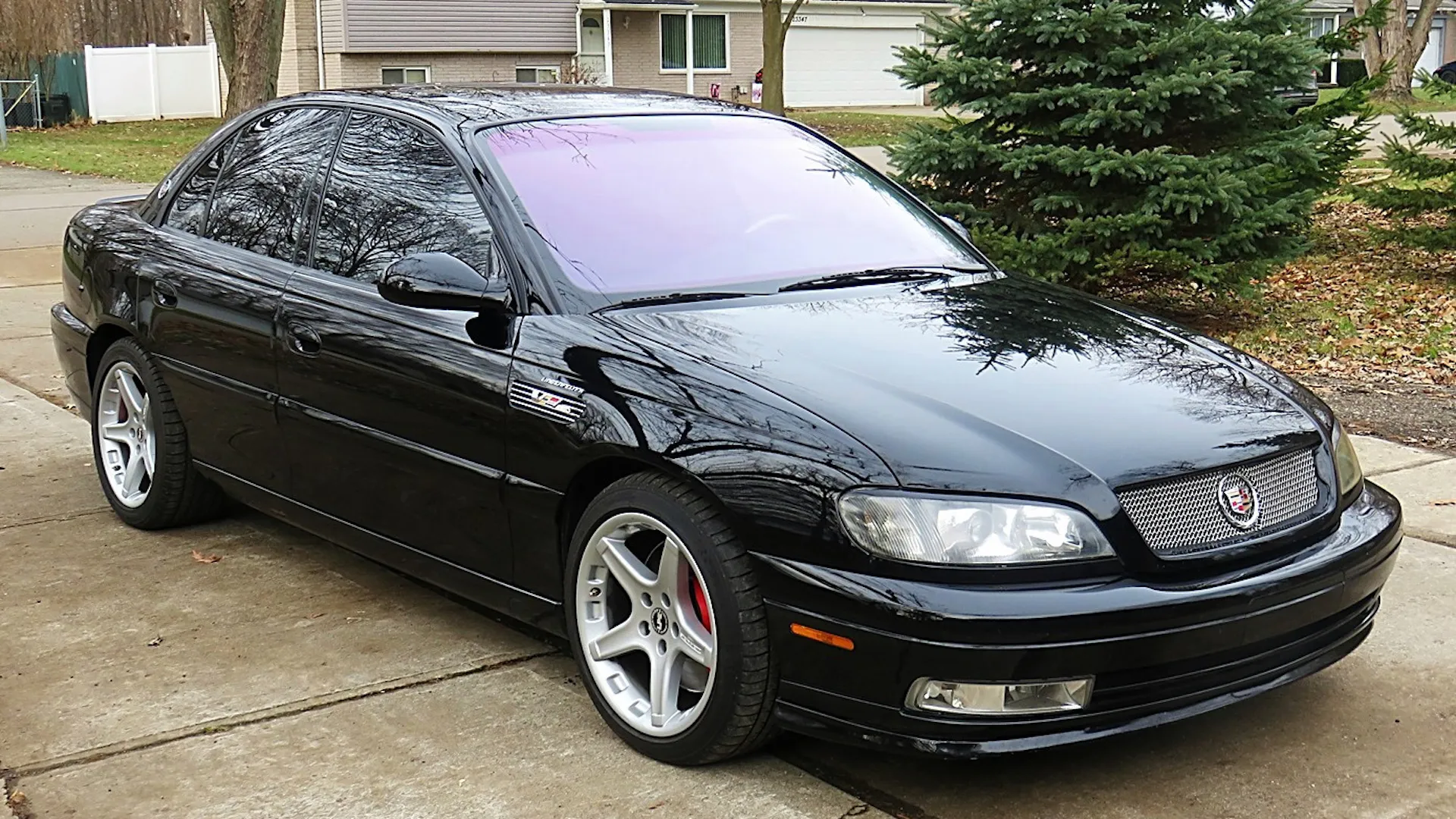
5. 2000 Cadillac Catera
The Cadillac Catera was a bold attempt to bring European sensibilities to the American luxury market under the Cadillac name. Based on the Opel Omega B platform, the Catera was assembled in Germany and imported to the U.S. with the tagline “The Caddy that Zigs.”
The intention was clear: attract younger buyers with a mid-size, rear-wheel-drive sedan that combined European agility with Cadillac flair. But in reality, the Catera landed awkwardly.
It wasn’t particularly sporty, nor was it especially luxurious. Most importantly, it utterly failed to deliver the smooth, serene ride that Cadillac customers expected. Instead of floating like a traditional Cadillac, the Catera bumped, jittered, and rumbled like a mid-tier import.
The suspension tuning was uninspired. Designed more for cornering composure than comfort, the Catera lacked the refined damping needed to smooth out rough roads. It transmitted vibrations and harshness into the cabin with startling regularity.
Combined with subpar cabin insulation and a relatively basic interior, the Catera often felt like a dressed-up rental car rather than a premium sedan. There was no magic carpet ride here—just a mediocre chassis struggling to balance Euro performance with American luxury. It was a compromise car in the worst way: trying to do too many things and failing at all of them.
The Catera also suffered from reliability issues, which only compounded its lack of identity. With questionable build quality and a ho-hum driving experience, it’s no wonder the model faded quickly from Cadillac’s lineup. Unlike models that reimagined Cadillac’s future (like the CT6 or XTS), the Catera failed to honor its past or inspire loyalty.
It was a Cadillac in badge only—offering none of the graceful isolation, none of the rolling silence, none of the road-soothing comfort that made the brand legendary. It wasn’t just that the Catera didn’t ride like a cloud—it didn’t ride like a Cadillac at all.
Also Read: 5 Cars That Never Overheat and 5 With Boiling Point Issues
The story of Cadillac is not just about luxury—it’s about evolution, missteps, and redemption. The brand’s journey has seen incredible highs and sobering lows, each phase etched into the design and engineering of the vehicles it produced. At its heart, Cadillac’s reputation was built on a ride so soft, so serene, that it became its own kind of legend.
People didn’t just want a Cadillac—they wanted that Cadillac feeling. That calm. That ease. That sense that the road didn’t matter, because you were floating above it. For decades, Cadillac mastered this experience in a way that no other manufacturer quite managed to replicate.
Yet as the landscape of luxury changed, Cadillac tried to change with it. It’s understandable. No carmaker can survive on nostalgia alone. As performance became the buzzword of the 2000s and precision handling became the benchmark for prestige, Cadillac understandably tried to prove it could compete.
And it did, in many ways. The brand developed real driving machines, models that could corner, brake, and accelerate with the best of them. But the pendulum swung too far. In trying to become something new, Cadillac forgot what had made it special in the first place.
The cars that “lost the magic” aren’t bad cars. Some are excellent in their own right. But they lost the essence—the defining ride quality that made Cadillac a verb in the lexicon of comfort.
They became indistinct in a crowded market, more like their rivals than themselves. A Cadillac that rides like a BMW might perform better, but it no longer feels unique. And for a luxury brand, that uniqueness is everything.
On the other hand, the Cadillacs that still ride like clouds represent the brand’s soul at its most intact. These are the models that stayed true to the company’s DNA, whether through traditional engineering or through modern innovations like Magnetic Ride Control and advanced suspension systems.
They’ve proven that you can honor the past while still embracing the future. These cars don’t compromise—they elevate. They remind drivers that luxury isn’t about how fast you take a turn, but how little you feel it.
As Cadillac now looks ahead with its electric future—the Celestiq, the Lyriq, and beyond—it faces a new opportunity. These new platforms don’t need to repeat the mistakes of the past.
With fewer mechanical constraints and more focus on software and refinement, Cadillac has a golden chance to fully restore the ride quality that once defined it. Not to replicate the past, but to reinterpret it for a new generation.
Because ultimately, to be a Cadillac is to ride like nothing else. And as long as that remains true—whether powered by a V8 or a lithium-ion battery—the brand’s magic will never be lost.

